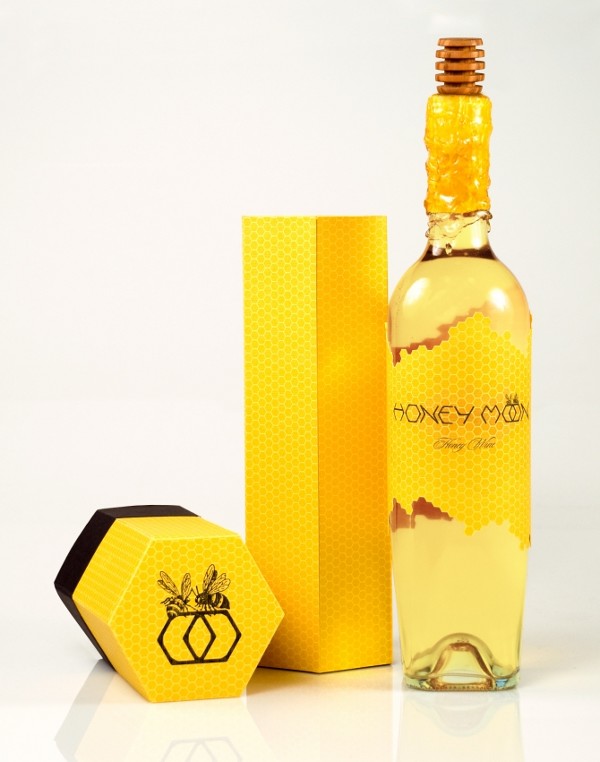Main Hall | COMICON.com
Wednesday, May 26, 2010
Main Hall | COMICON.com
Main Hall | COMICON.com
5/27-30: Phoenix Comicon not just for comic book geeks
Card-carrying comic book geeks aren't the only people buying tickets to the ninth annual Phoenix Comicon.
Fans of all types of popular culture, from movies and television to anime and action figures, will find something for them inside the convention doors.
Along with 3 1/2 days of activities and a sold-out vendor floor, some big-name guests are scheduled this year. Convention guests can meet Marvel Comics giant Stan Lee, talk to "Spawn" creator Todd McFarlane, and get an autograph from James Marsters of "Buffy the Vampire Slayer." Valley best-selling author Diana Gabaldon is scheduled to appear and "Star Trek" actors Jonathan Frakes, LeVar Burton and Wil Wheaton will be on hand. Even Lou Ferrigno, the original Hulk, will be there.
"We've adopted a big tent view of the convention," founder and director Matt Solberg said. "We're all fans of different genres. In some ways it's saying, 'I don't want to limit myself when I go to a convention.' "
Along with a guest list that doubled from last year, the show has a larger home this year. Moving from its four-year home at the Mesa Convention Center to the south building of the Phoenix Convention Center, the pop-culture fest was able to triple its space.
"In many ways it's not the same as last year because of the tremendous growth," Solberg, 35, said. "In Phoenix we have room to grow for years to come."
And, while organizers like Solberg (who is also an anime vendor at the Comicon) want the show to keep expanding, guests such as "The Looking Glass Wars" author and film producer Frank Beddor hope it can keep the intimate atmosphere it has become known for.
"We'll see if it can keep the same spirit," he said. "It'll be interesting to see if the character of the event changes with location."
Beddor, who travels to Comicons around the country, said the Phoenix show has gained a reputation in the industry as a place where creators can interact on a personal level with interested fans. It's this kind of face-to-face opportunity that Beddor said allowed him to cultivate such a loyal fan base in the Valley, one of his biggest markets.
"When I first went to Phoenix, on the surface, it seemed small and cramped," he said. "But, it turned out all of the fans were great connoisseurs of pop culture."
This will be the first year Jaime Paglia, creator of Syfy Channel's "Eureka," will be at the show. He's a San Diego Comicon veteran, and said he's excited to come to the Valley show, which "Star Trek" actor Wheaton recommended to him.
"Sci-fi fans are the best fans in the world," he said. "They're loyal and passionate. It's exciting."
Like many of the creators at the show, Paglia will present a teaser from his latest project, the fourth season of "Eureka," a show he described as " 'Northern Exposure' with 'X-files' and 'Twilight Zone' mixed into it."
"It's the same town but with some big changes," he said of the upcoming season. "It will retain all the things we love, but raise the game for all characters."
Make sure to check out the Geek Prom, Elegant Lolita Tea Party, Zombie Beauty Pageant, Japanese Fashion Show, and Masquerade Ball. There are also live musical performances throughout the weekend. Most of the evening activities are held at the Phoenix Hyatt Regency.
5/27-30: Phoenix Comicon not just for comic book geeks
Sunday, May 23, 2010
SOLAR TODAY: Video: ASES' Brad Collins on Solar's Progress
American Solar Energy Society Executive Director Brad Collins talks to RenewableEnergyWorld.com's Stephen Lacey about the growth in the solar industry and how it's helping ASES further its goals.
SOLAR TODAY: Video: ASES' Brad Collins on Solar's Progress
Posted using ShareThis
Saturday, May 22, 2010
Mackay: Things every job applicant should know
When I scrolled through the unemployment data recently, one number stood out for me: More than a quarter of our young people are out of work.
What young adults need to worry about is not how to shine on their first day on the job. It's about learning to excel your first day on the job market. If you're a young person entering today's job jungle, it's a little like suiting up for an episode of "Survivor" in the jungles of Borneo.
Here are some tips that can help drain the pain from your job-market debut:
• Don't bulk e-mail your credentials or resume to everyone and their cousin. In the e-mail age, a resume is just more digital clutter. Every day, companies are using more and more sophisticated tools to block the inflow of unwanted applications.
• Intelligently use snail mail to differentiate yourself. I'm not just saying that because I'm in the envelope business. Make the letter that you send as distinctive as you can. Address it to a particular person. Link your cover letter into the recipient's school affiliation, hobbies or - best of all - an acquaintance you have in common.
• This is all about making the A-Team. Maybe you had the valuable experience of playing a varsity sport in school. If you wanted to excel in athletics and make the academic grade, you learned pretty soon that the first skill to master is time management
• Getting a job is a job. Plan out every precious day. When you climb out of bed, commit yourself to making x-number of calls and blocking out time to study business news on the Internet. When your head hits the pillow at night, you should think: "Clothes in shape? Appointments confirmed? Schedule set? Sign off. You've had a busy day."
• Don't waste time on the Internet, and don't upload stupid, self-damaging information on social sites such as Facebook. Stay away from game sites. They can addictively suck away valuable hours day after day. Will your instant recall of the latest dish about Lindsay Lohan or Justin Timberlake get you a job? The party-animal photo you're keen to upload to Facebook may be fun for your pals, but it may eliminate you from a firm that is about to extend you an offer.
• Build human networks. What are your career goals for the next one to two years? Find people in your community and on the Internet who are already where you want to be. Learn exactly what it took to be where they are.
• Volunteer. You'll feel good about the contribution you make. If you're asked to raise money for a good cause, you'll learn what kinds of salesmanship works - and, when it doesn't, how to accept being rejected. If you're a positive, high-energy volunteer, you might even impress a community leader who can help you find a paying job of the sort you're after.
• Learn about specific credentials, and get them. Find out what certification is required for the job you want and why it's important. Talk with people who have gone through the certification program and exams to learn the biggest challenges. Keep your credentials up-to-date. High-tech fields upgrade their standards constantly.
• Give people good reasons to recommend you. Professional recruiters will tell you that your best assets in a job search are the enthusiastic recommendations of employed, well-respected experts in your field. Learn what skills and attitudes these people value and what they look for in an up-and-comer.
• Stay in shape. Being in top condition will keep you energized and improve your overall sense of discipline. Working out is also a great way to channel the frustration of being rejected.
• Prepare for every job interview as though it were a trip to the Super Bowl. Research the firm inside out. Ready yourself with intelligent questions to ask. Be poised and on time for your meeting. Debrief yourself, and grade your performance immediately after the encounter.
Mackay's Moral: You may not be after a sales job, but you have to be one great salesperson to sell yourself.
Mackay: Things every job applicant should know
Friday, May 21, 2010
Wednesday, May 19, 2010
Monday, May 17, 2010
The Funniest Parenting Fails Of All Time (PHOTOS)

Raising kids is hard work (for visual evidence, try "Sh*t My Kids Ruined") but we're certain almost anyone can avoid making these parenting mistakes. For example, If you need to take your baby somewhere in a stroller, you should be able to do it without riding a motorized device or turning your child's lap into a shopping cart, right? We thought so. Look, we know kids don't come with instruction manuals, but if they did, we're confident the use of leashes and duct tape wouldn't be in there.
The Funniest Parenting Fails Of All Time (PHOTOS)
Sunday, May 16, 2010
Exercise can ease anxiety
Most people seeking treatment for depression
or anxiety face two choices: medication or psychotherapy. But there's a third choice that is rarely prescribed, though it comes with few side effects, low costs and a list of added benefits, advocates say.
The treatment: exercise.
"It's become clear that this is a good intervention, particularly for mild to moderate depression," says Jasper Smits, a psychologist at Southern Methodist University in Dallas.
It's no secret that exercise often boosts mood. Now, data pooled from many small studies suggest that in people diagnosed with depression or anxiety, the immediate mood boost is followed by longer-term relief, similar to that offered by medication and talk therapy, says Daniel Landers, a professor emeritus in the department of kinesiology at Arizona State University.
And exercise seems to work better than relaxation, meditation, stress education and music therapy, Landers says.
Many physicians may not be comfortable prescribing exercise; Smits and another researcher, Michael Otto of Boston University, are on a mission to change that. The two have written a guidebook for mental-health professionals and are working on guides for primary-care physicians and consumers.
But Smits is quick to say that medications and psychotherapy are good treatments, too, and can be combined with exercise.
Remaining questions:
• What kind of exercise works? Most studies have focused on aerobic exercise but have not ruled out strength training or other regimens.
• How much is needed? At least one study shows results from the amount recommended for physical health: 150 minutes of moderate exercise (such as brisk walking) or 75 minutes of vigorous exercise (such as running) each week.
• How does it help? Does it boost certain brain chemicals? Induce deeper sleep? Give patients a sense of action and accomplishment?
• Can it prevent initial bouts or recurrences of depression and anxiety?
"I don't think exercise will ever be the only treatment, but it may be a major part of preventing recurrences," says Michelle Riba, a psychiatrist
at the University of Michigan. "It should be part of everybody's plan of health."
Exercise can ease anxiety
Saturday, May 15, 2010
10 Things You Can Never Say On A Date. - @TremendousNews!
I asked my tiny friends on Facebook what the worst thing to say on a date was.
They had a few ideas from experience.
Unfortunately, I recalled using some of them on my dates.
Which is why I don’t date now.
Let’s get started.
1. “You Remind Me Of My Ex.”
This is like going to a job interview and the boss says You remind me of exactly the type of person we fire.
2. “You Remind Me Of My Dad.”
Just say You’re never getting laid.
3. “Does This Look Infected To You?”
If it’s debatable, it’s not presentable.
4. “I Forgot To Take My Meds.”
Anti-rapist pills? Diarrhea? When we wonder, we start with those.
5. “So I Read On Google That You…”
We want to be courted, romanced, then creepily stalked. Don’t upset the order.
6. “You’re Late. Are You Screwing Someone Else?”
Yes! Let’s keep it short, I’m late for another screwing appointment.
7. “You Don’t Watch That ‘To Catch A Predator’ Show, Do You?”
Be proud. It’s network TV.
8. “I Have The Worst Hemmorhoid.”
You can compare this one to others? Think of what the future will bring
9.”I Only Brought Enough Money For What I Got.”
Nothing’s hotter than poorness.
10. “I’ve Already Sent You A Friend Request On Facebook.”
So you can’t ever, ever leave me.
–
That’s just the beginning. I’m sure you have more. Leave a line in the comments, and let me know if it actually happened to you.
On Twitter? Follow me here.
Thank you to my tiny friends on Facebook for allowing me to harvest and exploit their minds.
Images by ShutterStock.
10 Things You Can Never Say On A Date. - @TremendousNews!
Mackay: Initiative is an attribute bosses love
A college education is valuable, and I salute all the graduates who are heading out into the wonderful world of work. A degree is an important step toward career achievement.
But a sheepskin doesn't guarantee success. Without taking anything away from the value of higher education, some pretty famous "dropouts" have made the grade in business. For example:
• Mary Kay Ash, founder of Mary Kay Cosmetics Inc., had no college education at all.
• Sir Richard Branson, owner of the Virgin Brand of 360 companies, dropped out of school at age 16.
• Simon Cowell, "American Idol" host and music executive, left college early and eventually landed in the mailroom of a music-publishing company.
• Barry Diller, chairman and CEO of IAC/InterActiveCorp, which owns Home Shopping Network, Ticketmaster, Match.com and other companies, dropped out of UCLA after one semester.
• Kirk Kerkorian, real-estate investor worth approximately $15 billion, left school in the eighth grade.
• Ralph Lauren, fashion designer, dropped out of business school after two years.
• Rachael Ray, celebrity chef and TV personality, started her adult career working at Macy's candy counter.
• And the most famous Harvard dropout of all is Bill Gates, Microsoft mogul and philanthropist extraordinaire.
What common trait do they all share? The No. 1 attribute that employers look for: initiative. They all took ideas and put them into action. Some had a little experience that they translated into big business
. Others trusted their gut instincts and went out on a limb. The best education money can buy won't necessarily include a class on initiative. So, dear graduates, hone this skill, because you will be competing against people whose formal education can't match yours - but their go-getter attitude will propel them to the top.
As my friend the late Jim Rohn said: "Formal education will make you a living. Self-education will make you a fortune."
One of the best compliments I can give when writing a reference letter is that the person takes initiative. Translation: the willingness to at least try, to take a risk, to give it their absolute best shot. When I recommend someone in those terms, a light goes on for the prospective employer.
Initiative is not a promise of perfect results. Sometimes it results in failure - sometimes, a satisfactory, but not remarkable, outcome. Other times, the effort ends in a smashing success. An employee who can step up to the plate three runs down in the bottom of the ninth with the bases loaded and two outs and envision a grand slam instead of a pop fly is the kind of player I want on my team. That employee will wait for just the right pitch and send it over the fence.
Don't worry if you weren't born knowing how to take initiative - it can be learned. In fact, a lot of us learn it the hard way, getting stuck in a rut and trying to dig our way out. At some point, frustration sets in and we decide to take charge of the situation.
If that sounds like a challenge you are ready for, prepare yourself to:
• Be creative. Consider different ways to approach the work you do. Brainstorm with your team, or lacking a large group, brainstorm by yourself. Write down even the most unconventional and seemingly impossible solutions. Always, always be open to new ideas.
• Learn new skills. Identify what you want or need to learn to improve your worth. Set a goal to master a new skill with every project. It doesn't matter if that means learning another language or understanding a computer application. Just get yourself in the habit of adapting to the situation so you can be ready to contribute.
• Do the legwork. You want to convince people your idea will work? Hit them with facts. Do your homework. Find supporting research. Talk to co-workers.
• Don't sit on your ideas. Speak up if you have the idea and the supporting facts to back it up. Volunteer to lead the team or do the project yourself. Let your supervisors and co-workers know you are willing to take responsibility and evaluate progress, changing course if necessary.
• Try, try again. If your one idea didn't get an OK, don't be discouraged. Keep looking for other ideas, or reinvent your idea to overcome objections. Demonstrate your willingness to adapt.
Mackay's Moral: When you take initiative, there's no telling where it will take you.
Mackay: Initiative is an attribute bosses love
Tuesday, May 11, 2010
Colour my world - Chicago
I realize
Just what you mean
To me
And now
Now that you're near
Promise your love
That I've waited to share
And dreams
Of our moments together
Color my world with hope of loving you
Colour my world - Chicago
Sunday, May 9, 2010
How Arizona is seen across the nation

Although there has been some vocal support, Arizona has taken a beating in the media over its new immigration law. Here's a look at how the debate has played out across different media throughout the country.
Danny Glover thinks Arizona's controversial immigration law is "misguided."
Steve Nash, in his "Los Suns" jersey, says it represents Arizona poorly around the world.
That's nothing compared with Jon Stewart, who called Arizona "the meth lab of democracy," or his Comedy Central cohort Stephen Colbert, who warned that the economic effect of the law could make Phoenix "like a very dry Detroit."
Many people support the law. Many others oppose it. But there's no denying it has exploded in popular culture like few other political stories in Arizona history.
"It impacts our brand," said Lawrence Moore, a Phoenix public-relations and marketing consultant. "And unfortunately, we have far too little on the positive side in that arena to balance it out."
To date, there is little question that Arizona is losing the public-relations war. But questions remain over how long Arizona will feel the effects - or whether, in the grand scheme of things, it matters at all.
"Unfortunately, it reinforces a part of our brand that has a history," said Moore, who resigned from the Governor's Film and Television Commission on April 23 in protest of the law's signing. He said the law had damaged the state's reputation, much as the elimination of the Martin Luther King Jr. holiday did in the 1980s.
Other PR professionals say the controversy will have a limited impact on the state's image.
"Despite the rash of negative headlines, Arizona's 'brand' will pretty much stay the same: sunshine, spring training, the Grand Canyon, fast-break hoops and populist politics," Chip Scutari, a political consultant with Scutari and Cieslak Public Relations, said in an e-mail. "It's our reputation that's at stake."
Broad debate
The snark, the vitriol, the swastikas scrawled on the Capitol - it's all a result of Gov. Jan Brewer signing Senate Bill 1070, which will make it a state crime to be in the country illegally and will require anyone whom police suspect of being in the country illegally to produce legal identification.
Debate over the measure has led to heated discussion across all media - newspapers, television, radio, blogs, Twitter and Facebook. Will the attention tarnish Arizona's image globally? As with so much of the immigration debate, it depends on whom you ask.
Plenty of people support the new law - a majority of Arizona voters, in fact, according to several recent polls.
Conservative talkers Sean Hannity and Rush Limbaugh have taken to the airwaves to defend the law, often in strident terms.
"The law in Arizona is the law, so shut up, those of you who don't like it," Limbaugh told his radio listeners. "The debate's over."
Still, it's hard to deny that the law's opponents have the edge when it comes to celebrity.
There's Shakira at Phoenix City Hall, enduring a kiss from Mayor Phil Gordon, saying she's "worried about the impact that implementation of this law will have on hard-working Latinos."
And Ricky Martin, at the great gathering of political pundits that is the Billboard Latin Music Awards, made sure to say the law "makes no sense."
Trending topic
Even at the office drone's classic lunch-hour escape, social media, you can't escape talk about the law.
Facebook lit up with debate, as people on both sides of the issue posted articles and status updates on the subject, leading to pages of spirited comment.
Cities from San Francisco to Boston have banned city employees from traveling to Arizona at taxpayer expense, and conventions are canceling trips here by the day. Such moves only served to add fuel to the fire.
Folk art criticizing the legislation popped up across the Web, from a Lalo Alcaraz cartoon that replaces the word "Arizona" with "Police" in a map of Southwestern states to a photograph of a Mexican flag cut into a star of David.
Meanwhile, a supporter of the law made an illustration of Brewer as Rosie the Riveter. "Arizona," the cartoon reads. "Doing the job the feds won't do!" The illustration was posted on a website for Glenn Beck supporters, and it quickly began to ricochet around social media.
On Twitter, Eva Longoria Parker of "Desperate Housewives" railed against what she called "anti-Mexican hysteria." "Stop the HATE," she tweeted.
On the same site, comedian George Lopez took a lighter approach.
"Went to buy a ARIZONA Iced Tea," he said. "They asked me for my documentation. So I bought HORCHATA instead!"
Lopez's joke got re-posted so many times that the makers of AriZona Iced Tea had to issue a news release to assure everyone that their product is made in New York and has nothing to do with its namesake.
There's a lot of that going around.
Scutari said Arizona is being depicted as "a land of caricatures." It will be up to Arizonans to show the world that there's more to us than our immigration policies, he said.
"Unfortunately, most of America does not see the real Arizona: The vast majority who live here are good, hard-working people (parents, teachers and blue-collar folks) who make the state an amazing place to live," Scutari said.
Push for reform
If there's a silver lining to the dark cloud of controversy, it's this: The law could give both sides what they say they want: immigration reform.
Judith Gans, who manages the Immigration Policy Program at the University of Arizona, believes the law could prove to be a turning point in the debate.
"It may be something that shifts the national playing field in a good way - in a way that says we've got to get off the dime and fix this problem," Gans said.
That could be what it takes for Shakira and Limbaugh and the rest to turn their attention elsewhere.
Time will tell. In any case, PR professionals say we can expect the media circus to leave town shortly.
After all, there are other stories to cover - and 10 other states considering immigration legislation like Arizona's.
How Arizona is seen across the nation
Saturday, May 8, 2010
Sunday, May 2, 2010
Hefner's $900,000 ensures protection for Hollywood sign

Los Angeles City Councilman Tom LaBonge offers to take a photograph of the Shrestha family, visiting from Nepal, in front of the Hollywood sign after he and Gov. Arnold Schwarzenegger announced that a $900,000 donation from Playboy founder Hugh Hefner closed the gap on their campaign to buy 138 acres around Cahuenga Peak, site of the iconic sign.
Multiple Page View
When Playboy founder Hugh Hefner heard that the campaign to buy the open space west of the Hollywood sign was short about $1 million, he knew he had to step in once again to protect the famous Los Angeles landmark.
"Turned out the kid was back in the water again," he said in a telephone interview.
So he anted up $900,000, which helped the campaign cross the finish line. On Monday, the Trust for Public Land announced that, thanks to Hefner's gift and an additional $500,000 from the Tiffany & Co. Foundation and Aileen Getty, it finally had the $12.5 million needed to buy Cahuenga Peak from Fox River Financial Resources Inc.
The 138-acre property, which offers a spectacular 360-degree panorama of the Los Angeles Basin and the San Fernando Valley, now will become part of Griffith Park.
In 1978, Hefner played a major role in a campaign to fix up the then-terribly dilapidated Hollywood sign. Ensuring that the land would remain undeveloped was worth taking action again, he said.
"It's like saying let's build a house in the middle of Yellowstone Park. There are some things that are more important. The Hollywood sign represents the dreams of millions. It's a symbol. It is as the Eiffel Tower is to Paris. It represents the movies."
The mountaintop once belonged to aircraft titan Howard Hughes, who acquired it in the 1930s hoping to build a love nest for actress Ginger Rogers. (She wouldn't let him.) It sat unbuilt upon and forgotten for decades until 2002, when a group of Chicago investors bought the land from the Hughes estate at a bargain-basement price.
When they announced plans to subdivide the peak into five luxury home sites and try to sell them off for $40 million, city officials were as shocked as residents.
"Like many people, I had assumed that all the land surrounding the Hollywood sign was part of Griffith Park, " said Liz Kuball, a photographer who lives in Hollywood and donated $10 online.
"I grew up in the Midwest, and although I didn't move out to Los Angeles to be in the entertainment industry, I did move out here with the complete conviction that things would be better, and they have been. To me, the Hollywood sign represents that promise."
According to the Trust for Public Land, the campaign — which in February briefly covered the Hollywood sign with the words "Save the Peak" — won support from all over the world, with donors from as far away as Norway and Japan.
The Tiffany & Co. Foundation and Aileen Getty each donated $1 million to kick off the fundraising — and then in the final days offered $500,000 more in a matching grant if the trust could raise the final $1 million. About $5.7 million of the purchase money came from state and local funds earmarked for park land acquisition. An additional $3.2 million was raised from Hollywood A-listers including Steven Spielberg and Tom Hanks. About $200,000 came from online donations from Kuball and thousands of others and from local activists who raised money creatively — with a concert on the Sunset Strip and bake sales.
More than 27,000 people followed the campaign on Facebook.
"This is the optimum makeup of philanthropy. It's been embraced by such a broad spectrum of interest," said Sam Hodder, California state director of the Trust for Public Land. "By investing in public spaces like this, we are giving the community a chance to interact together. It's a great equalizer. This is their mountain now."
Gov. Arnold Schwarzenegger spoke of the Hollywood sign and the dreams attached to it at Monday's announcement of the purchase.
"I am proud we were able to come together and create a public-private partnership to protect this historic symbol that will continue to welcome dreamers, artists and Austrian bodybuilders for generations to come," he said.
L.A. Councilman Tom LaBonge, who was very active in the fundraising campaign, said saving the peak was a once-in-a-lifetime opportunity.
"The Cahuenga Peak is very majestic. This is one mountain you actually could see which is not obscured by houses," he said. "If we lost this opportunity, we wouldn't experience what is truly nature in the heart of the city."
Home Item
Maserati Monthly: Track - Maserati aims for further domination of FIA GT Championship
For the past two years the Maserati MC12 supercar has been competing – and winning – in the FIA GT Championship. The 2007 season of the series gets under way in March, with a trip to the Zhuhai circuit in China, which makes this the perfect time to look back at the history and technology of the superlative car.

The Maserati company was originally created to do one thing: build race cars. The company didn’t commence building road cars for another twenty years, when the A6 Gran Turismo was unveiled in 1946. While the company had spectacular success in grand prix racing with the legendary 250F, with Juan Manuel Fangio taking the World Championship in 1957, Maserati has a long and illustrious history in GT racing. So when considering the type of car to create for the 21st Century, it was only natural that it should be a Grand Tourer.
Capitalising on the company’s technical partnership with Ferrari, the MC12 utilises the carbon-fiber monocoque used for the Enzo Ferrari, along with a modified version of the 6-liter V12 engine from the Enzo. Very little else was carried over; the bodywork, for example, bears no relationship to the Ferrari. Based on a design concept by Giugiaro, was then refined by renowned designer Frank Stephenson, making extensive use of the wind-tunnel.
Despite having the diameter of the air intakes restricted, the 48-valve, quad-cam engine develops over 600bhp, fed through a six-speed paddle-shift gearbox that would be familiar to anyone who has driven a roadgoing Maserati equipped with a DuoSelect or Cambiocorsa gearbox. As everything possible has been done to make the car as light as possible, performance is stunning – the roadgoing version goes from zero to sixty in under four seconds, and the top speed is over 200mph.

Oschersleben in Germany
The MC12 made its debut in the eighth round of the 2004 FIA GT Championship at Imola, as a ‘guest’ entry; the potential of the car was immediately apparent, with the two cars finishing second and third. At the next race, at Oschersleben in Germany, Andrea Bertolini and Mika Salo went one better and claimed the first win for the Maserati. A second place in Dubai was followed by the final race of the season, in China – and the two MC12s came home first and second.
For 2005 there were no fewer than four Maseratis competing in the championship – two each for the Vitaphone Racing and JMB Racing teams. The opening round at Monza saw the four cars finish 2-3-4-5, with the cars in second and third both within 2s of the race winner. The next race, at Magny-Cours in France, saw an historic 1-2-3 for Maserati; a further four victories came over the remainder of the season, including a remarkable 1-2 finish in the grueling Spa-Francorchamps 24 Hours race.
By the end of the season Vitaphone Racing had claimed the Teams’ Championship ahead of JMB Racing, with Maserati dominating the Manufacturers’ Cup with a points total almost double that of their nearest competitor. Timo Scheider and Michael Bartels just missed out on the Drivers’ title, beaten by a single point.

Vitaphone Racing raced on in 2006 with their two cars, and this time the pairing of Bartels and Andrea Bertolini were not to be denied. The season began in fine style with a win in the opening round at Silverstone; on the podium, Bartels and Bertolini were presented with the historic Tourist Trophy by racing legend Sir Stirling Moss. A 1-2 finish came at Oschersleben, followed by a back-to-back win in the 24 Hours at Spa.

Team-mates Jamie Davies and Thomas Biagi found their stride in the second half of the season, claiming victories at Dijon and Adria, while Bartels and Bertolini showed amazing consistency, scoring points in every round and clinching the coveted Drivers’ Championship with a race to spare; Vitaphone again won the Teams’ title with a winning margin over 50 points.
In 2006 the Maserati MC12 also raced in the Italian GT Championship; the Box Racing and Playteam SaraFree teams each entered two cars. The Maserati was almost unbeatable, winning fourteen of the sixteen races; the Playteam SaraFree squad has stepped up to the FIA GT Championship for 2007. With JMB Racing also opting to campaign their MC12 in the series, the FIA GT Championship could see as many as six Maseratis on the grid during the season.Maserati Monthly: Track - Maserati aims for further domination of FIA GT Championship
Saturday, May 1, 2010
Japanese Lady Gaga Fan Fashion Pictures

On Sunday night (April 18, 2010), Lady Gaga presided over the the second of her two sold-out shows at Yokohama Arena near Tokyo. We had so much fun hanging out with Gaga fans on Saturday (see our previous article, Lady Gaga’s Little Japanese Monsters) that we decided to head back out to Yokohama for Day Two. As we expected, a party atmosphere was in full effect hours before the concert doors even opened. We saw some familiar faces (many hardcore Lady Gaga fans went to both shows) and met a lot of cool fans that we hadn’t seen on the first day.
Of course we brought our cameras with us, and once again the Japanese Lady Gaga fans amazed and impressed us with their over-the-top fashion. Sure, we saw the large hair bows that Lady Gaga is known for (BTW, big hair bows have been quite popular in Shibuya for several years), but there were also a lot of handmade costumes, inspired-by fashions, totally original creations, and Japanese vs. Gaga style mashups (Lolita Gaga, Mori-Girl Gaga, Shibuya Gal Gaga, etc.) We couldn’t get pictures of every cool Lady Gaga fan we saw (that would require thousands of photos), but we tried to bring back a good collection for those of you that couldn’t make it to the show.
Before we get to the pics, we’d like to thank all of the Gaga fans who were nice enough to talk to us and to pose for our pictures on both days. A special shout-out to the amazingly awesome Japanese girl you see in the middle of the first two pictures below. She was totally cool and fun – so cool that we photographed her (and her huge Lady Gaga sign) on both days. Also, the girl in the last photo (at the bottom of the page) is obviously not Japanese. We saw her standing outside the arena trying to get a ticket for hours. We were too happy for her when she finally found a ticket for the sold-out show, so we took her picture with the ticket to celebrate. Enjoy the pictures!
As usual, we recommend the you click on the photos to see them at full size – the bigger the better!




Japanese Lady Gaga Fan Fashion Pictures
Evaluate whether a job change is right for you
As the economy begins to show signs of recovery, the mind-set among some employees is beginning to change.
Instead of "hunker down and survive" at their companies, they're now beginning to sniff the air for new opportunities: Is it time to ask for a pay raise or promotion? Or just jump ship for new experiences and more money?
Their interest is further piqued as industries from health care to technology to manufacturing begin to make new hires, and recruiters ramp up their efforts to snare talent. It's what career coach Joe Lavelle predicts will be "a huge musical chairs game" across companies in the coming year.
"There's going to be a lot of people leaving their jobs and taking new ones," Lavelle says.
Still, Lavelle says the expected employment churn doesn't mean that leaving an employer is the best plan for everyone. He says that as employees move from "job preservation mode" to "career management mode" they should consider several factors.
Among them:
• Set goals. "We're going to start to see more raises and promotions again, so you want to make sure you're documenting your contributions," says Lavelle, author of "Act as If It Were Impossible to Fail," (Results First Consulting, $13.99).
He suggests taking your last annual review and assessing whether goals were met or need to be adjusted, and communicating more often with the boss about new opportunities.
• Try not to overreact. It's tempting to think of starting over when you've been doing the work of several people during the past year and are frustrated at your employer's lack of recognition or reward for your efforts.
"Just because you leave a company doesn't mean you aren't going to be right back in the same place in another three years, feeling resentful and angry again," Lavelle says.
• Consider a rehire - of yourself. "Think about how you can get yourself really going again in your current job. Remember that every time you jump ship, you become the new guy somewhere else. And it's the new person who is the most vulnerable to layoffs."
• Assess your company's strength. Do your homework to gauge whether your current job is actually more stable.
• Make a five-year plan. It's important to know where you want to go and how you're going to evolve to stand out.
Evaluate whether a job change is right for you
'Peanuts' gang sold to Joe Boxer owner for $175M
NEW YORK — You've got a new owner, Charlie Brown.


In this Sept. 29, 1995, fie photo, cartoonist Charles Schulz holds a drawing of his famous comic strip character "Snoopy" in Santa Rosa, Calif. Schulz, the creator of "Peanuts", penned the round faced boy Charlie Brown, and his dog Snoopy. E.W. Scripps Co. said Tuesday, April 27, 2010, it will sell the unit that owns the licensing rights to Snoopy, Charlie Brown and the rest of the "Peanuts" gang for $175 million to Joe Boxer owner Iconix Brand Group Inc. (AP Photo/Ben Margot, File)
E.W. Scripps Co. said Tuesday it will sell the unit that owns the licensing rights to Snoopy, Charlie Brown and the rest of the "Peanuts" gang for $175 million to Joe Boxer owner Iconix Brand Group Inc.
The sale of United Media Licensing also means Iconix has a new partnership with the family of the late "Peanuts" creator, Charles Schulz. They'll receive 20 percent ownership in the unit that owns "Peanuts" and pay that percentage of the sale price.
United Media Licensing represents other character brands such as Dilbert and Fancy Nancy, but the bulk of its licensing business comes from "Peanuts."
The unit's licensed merchandise has annual sales of more than $2 billion, but the owners of the licenses receive a fraction of that. In 2009, revenue of the unit fell 10 percent to nearly $92 million. That figure includes United Media's syndication operations, which Scripps will still own, meaning it will still syndicate comic strips and editorial features.
The "Peanuts" gang appears everywhere — on T-shirts, greeting cards and sno-cone machines — six decades after the Minnesota native created them. The business has more than 1,200 licensing agreements and relationships with companies and retailers such as Warner Bros., Old Navy, CVS, MetLife Inc. and Hallmark Co. Some 20,000 new products are approved each year in more than 40 countries.
Scripps first brought the strip to market in 1950. By the time Schulz retired in 1999, Peanuts was in more than 2,600 papers. Schulz died in February 2000.
Scripps said the cash deal will close by the end of the second quarter.
The newspaper publisher and TV station owner announced in February it was exploring a sale.
Iconix, formerly known as Candie's, said it expects "Peanuts" to generate about $75 million in annual royalty revenue and noted a pre-existing revenue share with the Schulz family, separate from the new 20 percent arrangement. Iconix, based in New York, owns and licenses brands such as Joe Boxer, London Fog, Starter and Mudd, to retailers, wholesalers and suppliers.
"The Peanuts characters have been our entertaining co-workers and the Schulz family has been our trusted partner for nearly 60 years. But this is the right move for all involved as we go our separate ways in recognition of changing times and new strategies," said Scripps CEO Rich Boehne.
Iconix CEO Neil Cole said the purchase moves the company away from being one focused solely on fashion into new realms that include theme parks, media and financial institutions.
The family was heartened by the sale, said Charles Schulz' son, Craig Schulz.
"Peanuts now has the best of both worlds," he said. "Family ownership and the vision and resources of Iconix to perpetuate what my father created throughout the next century with all the goodwill his lovable characters bring."
'Peanuts' gang sold to Joe Boxer owner for $175M
4/24: Music Instrument Museum opens in Phoenix
The Arizona Republic
Phoenix becomes part of an epic musical journey this week.

When the Music Instrument Museum opens its doors Saturday, it will unveil instruments from every continent and culture, the largest collection of its kind in the world, with 14,000 objects. And in its way, it will become the single largest way station for a voyage that has been going on since someone on the Serengeti whacked two sticks together in rhythm.
Music always has been on this journey. As people throughout history traded wares, exchanged ideas, traveled and conquered, they carried music with them, too.
They carried music as a physical thing, the musical instrument itself - strings and woodwinds lugged on horse carts and clipper ships.
But with those instruments and the musicians that played them came the ideas of music, its pitches and rhythms.
With every note that is replayed, this audible journey continues.
"You can talk about music being a universal language, but that's not really true," says the museum's North American curator, Matthew Hill. "Instead, it's a universal behavior. Like language, they're all different. But I don't know of any human culture that doesn't have language of some kind and no culture that doesn't have some form of music."
From large to small, the instruments in the collection reflect that. There is the 12-foot-tall double bass - an "octobass" - that requires a ladder to play and hits notes so deep you feel them in the seat of your pants. There is the lowly walnut, sometimes used ad hoc in Italy to rap out a beat in folk music.

There is the piano on which John Lennon wrote "Imagine," Hardanger fiddles from Norway and a gamelan orchestra from Indonesia.
But this is a museum where hearing is as important as seeing. Viewers roam equipped with headphones, and as they approach each exhibit, the notes start playing.
The state-of-the-art headphones, given out with admission, are activated by proximity to a video screen. Stand in front of one, and you hear the music while watching indigenous musicians perform it.
"The one thing that's missing when you install these objects is the people," says European curator Christina Linsenmeyer. "So, we're trying as much as possible, if we have an image or a video . . . to use that."
On display are the instruments and the music itself, evoking everything from the travels along the ancient Silk Road to the creativity of contemporary rock and roll.

HEARING A JOURNEY
No one knows for sure where the earliest oboe came from, but it certainly evolved along the Silk Road, that ancient trading route across Asia that Marco Polo traveled and still conjures exotic images in the mind's eye.
You can see the oboe in the Persian sorna, the Turkish zurna, the Chinese suona, all variations of the same name, as well as the same instrument.
It came to Europe, and the name changed to shawm, the Medieval predecessor of the oboe.
And it was taken halfway around the world by Portuguese missionaries to Japan, where it became the charumera and the traditional instrument of noodle sellers, and by Spanish colonists to the New World, where it became the chirimia.
You find a surma in Ukraine, a srailai in Cambodia, a shehnai in India.
The journeys are ancient, but the borrowing goes on. Dave Mason played a shehnai in the 1968 Rolling Stones song "Street Fighting Man."
"That's our whole point: There is no such thing as an exotic instrument," Hill says. "There are only instruments you don't know about."
There is no pop, no art, no folk, no high, no low, he says. There is only music and the instruments that are played.
"And it's not just us who say that. That's how musicians have been since Day One."
INSIDE THE MUSEUM
There are 250 high-definition television monitors throughout, with video to watch and hear, through the earphones.
The museum's permanent exhibits are arranged in five galleries according to continent of origin. All but the North American gallery are divided by country, so there is a Peruvian exhibit, a Thai exhibit, a Lithuanian exhibit. In them, the instruments are often displayed as they are used, together in groups.
"We wanted to group the instruments as they would have been played together so it looks like the band just left the stage for a little while, and you come up and instead of punching a number in an audio-guide, this new technology automatically starts playing the soundtrack to the video you are closest to," says Bob Ulrich, the museum's creator and board chairman.
One of the unintended consequences of organizing the galleries by country is that it emphasizes how much things cross borders.
"Take the polka, and you think of an accordion," Hill says. "But you can't imagine a tango without an accordion, either."
MUSIC WITHOUT BORDERS
Perhaps the most remarkable thing to learn about these instruments is that the music isn't even really about the instruments. It is about the ideas, the people - that musical journey.
The name of one genre popular in the U.S. may be derived from the name of an instrument in a language in Africa. The rhythms of spirituals in one culture can become dance music in another.
King Sunny Adé has sold millions of records playing a type of music called juju, which derives from Salvation Army music heard in Nigeria in the 1930s.
"They just started adding drums," says African curator Amanda Villepastour. "One theory about the name juju is that it comes from a Yoruba word for playing a tambourine."
Adé also added pedal steel guitar, which had previously been used only in Hawaiian music and American country music.
All music is a mix, one culture borrowing from another.
"I was at a conference in Durban, South Africa, at the university there, and I found that the most popular area of study is opera," she says. "Go figure. The music of the White oppressors. They love it. Is it because it represents power? It might be. But they might just love the sound of it, or there might be something in a lot of opera that relates to Zulu music. I don't know what the connection is, but they're nuts about it."
People have been borrowing forever, Hill says.
Take Paul Simon's "Graceland," he says, with its famous rhythms and guitar licks borrowed from African pop. "Is this a big deal, using African musicians? Not really. That's how musicians have been since the beginning."
Asian curator Jennifer Post brings that home when she tells about a trip to Mongolia.
"I might be hanging out in a very remote area with a family in a yurt, and one member of the family says, 'I'm getting on my horse and riding across the border into China to buy a solar panel to run our black-and-white television.' He disappears and comes back. And after sharing a sheep that they've slaughtered for me and sleeping on the floor and all that, they then turn on the television, and we listen to hip-hop from Kazakhstan."
To Hill, the journey of music and its instruments is much like the journey of humanity itself.
"It's not neat," he says. "It's big, messy, complicated, and it doesn't tie up neatly."
4/24: Music Instrument Museum opens in Phoenix
Shore Magazine » Get Lead Story » Dirt on shoes—Cycles for women are centuries old
By Leanne Italie, Associated Press Writer April 1st, 2010
Flats, platforms, wedges and stilettos. Sandals, slippers, boots and clogs. Craftsmen and haute designers have been tweaking women’s footwear for centuries to reflect culture, politics and utility, but few have broken through with truly renegade reinventions.
“There are adaptations, but actual world-changing innovation is a lot less common than we might want to believe,” said Elizabeth Semmelhack, senior curator of the Bata Shoe Museum in Toronto.
The museum collects, exhibits and interprets footwear from around the world, with 13,000 examples of early designs and styles. Many are still referenced today, from thong sandals of the ancient East to towering chopines of Renaissance Europe.
Semmelhack gives credit to thinkers like Salvatore Ferragamo for his wartime cork wedges and Alexander McQueen for his 10-inch lobster claws, but she points to the rise of celebrity designers themselves as perhaps the most influential development of all.
“Did you even think about who made your Keds? Over the course of the 20th century, shoemakers have gone from anonymous craftsmen to fashion trendsetters,” she said. “It’s a relatively new phenomenon.”
So when, exactly, did shoes begin? No one knows precisely.
Researchers at Washington University in St. Louis theorize that western Eurasians used supportive footwear nearly 30,000 years ago, based on a shortening and weakening of the bones of the smallest four toes while leg muscles remained long and strong. Simpler, more ill-fitting coverings protected feet in harsh climates about 50,000 years ago, according to other research.
The oldest surviving specimens of shoes appear to be sagebrush bark strap sandals found in caves of the Northern Great Basin in Western North America that are thought to be more than 9,000 years old.
Sandals haven’t changed all that much since, or from ancient times in Egypt, Greece and China. Strappy gladiator touches have never gone out of style, bejeweled thongs mimic the practice of placing precious gems on shoes for royalty and platforms in the West can be traced in an almost unbroken timeline right on through to Carmen Miranda and Lady Gaga.
A surviving Spanish chopine mule with tooled leather over cork heels dates to before 1540 as one of the earliest platforms, Semmelhack said. One of the oldest depictions of people in high wooden clogs is “oriental” servants found in stone carvings on a 12th-century church in France, according to the Bata museum’s exhibition On a Pedestal: From Renaissance Chopines to Baroque Heels.
Even older, a wooden Japanese thong platform called a geta, with separate heel pieces, has been traced to 300 B.C.
High, narrow stilettos didn’t come into their own in the West until the 1950s, but chunkier heels detached from the front of a sole were everywhere among the upper crust in the 17th and 18th centuries. The separate high heel, Semmelhack said, “came into fashion in Europe but was worn in the Near East before it was of any interest to Europeans.”
Height has a long history played out in the extreme in chopines nearly 20 inches high in 16th-century Venice.
“Venetian women were actually sequestered and only put on view at certain times of the year,” Semmelhack said. “You don’t actually see the chopines themselves. They were put under women’s dresses. The cost of textiles was so high that wearing chopines meant more fabric and therefore higher status. They needed to lean on two servants and that was also a statement of how incredibly wealthy their families were.”
Color, in the same way as comfort food, often shows up in shoes via long-lasting books and movies, taking women back to their childhood romps through the closets of their mothers.
“Footwear has this special place, as we all know,” said Stuart Weitzman, who has a long relationship with glitzy heels and a new line of chunky jeweled and studded jelly sandals and shoes for spring.
Year after year, he said, his best-selling color in sandals is no color at all.
“Who is the first hero, the first story that every girl ever reads or learns or is told about in her lifetime? The transparent shoe in Cinderella,” Weitzman said. “Before you can read or write, you’re brainwashed into what a transparent shoe can do for your life. It takes everybody back to that time, the mystery.”
Weitzman does sell color as well. A consistent favorite is red. “Red, every year. Dorothy’s ruby slipper is second only to Cinderella’s shoe for so many,” he said.
As mass media and mass production made fashion “more democratic,” according to Semmelhack, politics often revolutionized it. Shoes were no exception. Heels went immediately flat in 1800 and stayed that way through 1850 in response to the French Revolution, a time that ornate heels were preferred by the ruling class, she said.
“Styles became much more widely available with mass production, but they also were much more regimented in terms of design,” Semmelhack said. “It’s interesting that when we head into more difficult economic times, we see a rise of very, very architectural and sculptural footwear.”
Platforms were reborn at the height of the Great Depression, linked to Hollywood glamour and excess. Not all high shoes appear built for torture, though many were promoted then and are sought after now for their slim silhouettes and dainty gaits—the same coveted traits that drove foot binding in China for thousands of years.
Ferragamo is one of the biggest names in women’s shoes. Some have speculated his wedges were inspired by chopines, but few realize he was genuinely interested in women’s comfort, Semmelhack said.
“With the wedge, he says he was trying to make an orthopedic shoe. He was attempting to offer women support all along the instep of their foot. He took courses in biology and the structure of the human foot,” she said. “He was trying to make a very comfortable, fashionable shoe and it just so happened he also created a fashion craze.”
Herman Delman, who founded the Delman brand 91 years ago, also built shoes of style and comfort. His company does a booming business in basic ballet flats today. Over the years, Delman hired Roger Vivier, Herbert Levine and other top designers as he attracted star clients like Marilyn Monroe and Joan Crawford, releasing ready-to-wear copies of shoes he made exclusively for the rich and famous, according to a student-curated exhibition at the Fashion Institute of Technology in New York, Scandal Sandals and Lady Slippers: A History of Delman Shoes.
Delman put out a gold studded platform with black leather crossed straps at the toe in 1939, with strikingly similar silhouettes still selling well. His strappy “Scandal Sandal” of the mid-1940s with ties crossing up the calf was based on a 1920s custom shoe for Irene Castle, a popular ballroom dancer and fashion icon. At the time, Delman called the look “daring.”
Ferragamo debuted his wedges in the 1930s. They stayed strong until the mid-40s, surfacing again during the social upheaval of the Vietnam War and the oil crisis of the late 1960s and ’70s.
“It seems to be about pushing boundaries, escapism,” Semmelhack said. “If Ferragamo was looking to the past, he was looking to the 16th century to be inspired by the last time a platform was in fashion.”
Cycles in shoes and fashion overall have become “tighter” in recent years, she said. “We’re looking back 20 years, even 10, to be inspired. Our concept of vintage is contracting.”
Mackay: Winners have conquered fear of 'no'
Rejection is a part of life. You can't avoid it, whether you're a saleswoman with a tough quota or a shy nerd hoping for a date with a supermodel. But you can't let the fear of rejection paralyze you from the start or you'll never get any sales - or any dates.
Like many of us, Jonathan Robinson (now a professional speaker and author) was shy as a young man - painfully so, especially when it came to women. One day in college he decided to do something drastic about it. He handed a friend $50 and told him, "Don't give this back to me unless I get rejected by 10 different women by the end of today."
The idea was to push through his fear of rejection, with money as a motivator. Robinson headed through the campus, looking for women to ask out. The first time, he was barely able to stammer his question, and the woman involved thought he was experiencing a seizure. She turned him down.
After a while he grew calmer, and women became less dismissive of him.
Then something unexpected happened: His seventh target agreed to go out with him. Robinson was so surprised he almost didn't have a response, but he managed to get her phone number. Then the next woman also said yes to him.
In all, he collected eight phone numbers, and had to resort to some mildly annoying behavior to reach his quota of 10 rejections in order to get his $50 back. Not only did he get his money, and plenty of dates, he vanquished his fear of rejection.
Would I recommend this exercise for overcoming your fear of rejection? Of course not! But I offer it lightheartedly to show that persistence in facing your worst fears can actually help you - even embolden you - to take on bigger challenges, knowing that success is also possible.
Early in my career, when I was struggling to start my company, I made a list of all the accounts I wanted to sell. Some were immediately attainable, and others were far out of my reach. That list was the impetus for my eventual success. It made me really listen to my potential customers and find out what I needed to do to change "No, thanks" to "Where do I sign?"
You can overcome your fear of rejection. Practice these exercises:
• Analyze and evaluate your thoughts. When faced with a challenge, what do you tell yourself? "I'm no good ... this is too hard ... I'll never make it ...?" Don't let negative self-talk sabotage your chances. Take an objective look at the evidence. Chances are you'll realize your worries aren't accurate or realistic.
• Identify realistic fears. Whom do you fear? What might go wrong? After all, today is the tomorrow you worried about yesterday. Knowledge is power, so clarify the facts: Who has the power to reject you? Why would that person say no? The answers will help you prepare your best offer, and facing them will help you keep your composure.
• Focus on the moment. Keep your perspective. Rejection lasts only a moment, and once it's over, you'll be able to move on to the next opportunity. Also, overcoming your fears can be an exhilarating experience. Anticipate the rush of tackling the challenge, and you'll be more positive in the heat of the moment.
• "It's just practice." One way to take the pressure off is to treat the situation as a practice session, regardless of the stakes. You still need to prepare and be at your best, but approaching the challenge as a learning experience will relax you.
• Be more assertive. Most fears of rejection rest on the desire for approval from other people. Don't base your self-esteem on their opinions. Learn to express your own needs (appropriately), and say no to requests when you genuinely can't help.
Mackay's Moral: Don't look at rejection as failure. Think of it as an opportunity to succeed the next time.
Mackay: Winners have conquered fear of 'no'
Archive
-
▼
2010
(383)
-
▼
May
(30)
- Main Hall | COMICON.com
- 5/27-30: Phoenix Comicon not just for comic book g...
- SOLAR TODAY: Video: ASES' Brad Collins on Solar's ...
- Menomena
- The Muppets: Ode To Joy
- Mackay: Things every job applicant should know
- Image Savant - Genetic Experiments
- WongBonz Countdown
- 2010 Customer Service Hall of Shame: Best and wors...
- The Funniest Parenting Fails Of All Time (PHOTOS)
- Bitter:Sweet - Dirty Laundry
- Exercise can ease anxiety
- Are You Happy ?
- cole rise
- Frank Lloyd Wright Lego Architecture Collection
- Amazing Wine Labels: 30 Creative and Unique Wine L...
- 10 Things You Can Never Say On A Date. - @Tremendo...
- Mackay: Initiative is an attribute bosses love
- Colour my world - Chicago
- How Arizona is seen across the nation
- Photography: Water Lily Pictures and Lily Pad Pict...
- Hefner's $900,000 ensures protection for Hollywood...
- Maserati Monthly: Track - Maserati aims for furthe...
- Japanese Lady Gaga Fan Fashion Pictures
- Evaluate whether a job change is right for you
- 'Peanuts' gang sold to Joe Boxer owner for $175M
- 4/24: Music Instrument Museum opens in Phoenix
- Shore Magazine » Get Lead Story » Dirt on shoes—Cy...
- Mackay: Winners have conquered fear of 'no'
- Tones on Tails-.o.k. this is the pops
-
▼
May
(30)











































